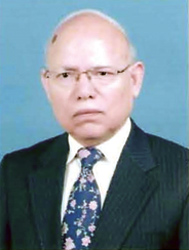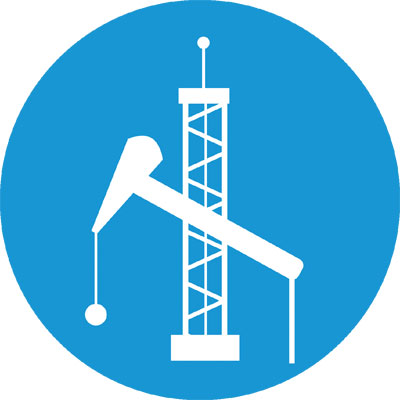ENERGY
It was in November 2015 that the Ministry of Petroleum and Natural Resources had assigned the Oil and Gas Development Co Ltd (OGDCL) and Pakistan Petroleum Limited (PPL) to jointly launch a pilot project on shale gas resources. The project, to be completed within three months, was to undertake assessment of potential shale gas reserves through drilling of wells in selected areas of Sindh, Balochistan and Khyber Pakhtunkhwa, to ascertain drilling cost and thus economic viability, and to determine corresponding technology needs. But so far there has been insignificant progress achieved, if any, by the two state-owned companies, resulting in inordinate delay in the government’s proceeding further for the exploration and exploitation of non-conventional gas resources.
 In spite of the fact that Pakistan became aware, almost a decade ago, of the enormous unconventional gas resources distributed in different areas of the country, there has not been any breakthrough as yet to explore, discover, map, exploit and develop these reserves to complement its energy supplies that are depleting fast. The nonconventional or unconventional gas resources are natural reservoirs that are difficult to develop, involve state-of-the-art technology and equipment, require comparatively larger investments, and are costly to produce gas commercially. Tight gas sand reservoirs are primary source for unconventional gas; others include shale gas, coal-bed methane, deep gas and geo-pressurised zones.
In spite of the fact that Pakistan became aware, almost a decade ago, of the enormous unconventional gas resources distributed in different areas of the country, there has not been any breakthrough as yet to explore, discover, map, exploit and develop these reserves to complement its energy supplies that are depleting fast. The nonconventional or unconventional gas resources are natural reservoirs that are difficult to develop, involve state-of-the-art technology and equipment, require comparatively larger investments, and are costly to produce gas commercially. Tight gas sand reservoirs are primary source for unconventional gas; others include shale gas, coal-bed methane, deep gas and geo-pressurised zones.
Tight gas is the gas stuck in a very tight formation underground and hard to reach. It is trapped in, unusually impermeable, hard rock or in a sandstone or limestone formation, typically where the conventional gas resources also occur. Generally, these reservoirs occur frequently at depths around 1,500 metres, are large in volume but of poor quality. In comparison, conventional natural gas deposits are found in permeable sandstone, and once drilled, the gas can normally be extracted readily and easily. Drilling and cementation technologies for extraction on unconventional gas deposits are complex. The gas is extracted, after deep vertical drilling, by way of horizontal drilling through the shale seam, followed by hydraulic fracturing or fracking of the rock by injecting fluid at extremely high pressure. The fluid, a mixture of water, chemicals and sand, creates fissures in the rock to release the trapped gas. Today, advances in horizontal drilling technology allow passing through larger volumes of a tight or shale gas reservoir and thus producing more gas.
Initial studies conducted by the international oil and gas Exploration and Production (E&P) companies operating in Pakistan had assessed 33 trillion cubic feet (TCF) tight gas in selected areas, though rough estimates of unconventional gas resources are of the size of about 10,000 TCF countrywide, according to a study conducted by the US Agency for International Development (USAID). In the wake of increasing gas demands and declining conventional gas reservoirs, the government had decided to develop these resources on fast track, having announced the ‘Tight Gas Exploration and Development Policy’ in May 2011. This established the policies, procedures, pricing regime and fiscal and financial concessions for exploiting unconventional gas reserves.
However, the policy was not implemented effectively, and government proposals to assess the proven, inferred and probable reserves of unconventional gas reserves remained in cold storage. The Tight Gas Policy was to be reviewed after two years of its announcement, but was not done so. It was with this background that the government launched a pilot project for shale gas development in 2015. The US Energy Information Administration (EIA) has updated its earlier estimates of shale gas reserves in Pakistan, from 51 TCF to 586 TCF, including technically recoverable 205 TCF and economically feasible 95 TCF reserves, mostly located in the Lower Indus Basin (in Ranikot and Sember). The study however is not comprehensive as it was based on shale formation of 1,312 wells drilled and data of 1,611 existing wells.
 The USAID has recently announced to do another study on shale gas deposits that would encompass the whole country as there are sizeable reserves in lower Punjab and Khyber Pakhtunkhwa also. Nonetheless, these recent estimates would be enough to cater to the national needs for the next 44 years, including current conventional gas reservoir. Current natural gas production is 4 billion cubic feet per day (BCFD), and the demand is almost double, whereas 2 BCFD import of liquefied natural gas (LNG) has been targeted. Pakistan will therefore continue to face huge gap between demand and supply in the coming decades, unless commercial exploitation of shale gas is undertaken soonest.
The USAID has recently announced to do another study on shale gas deposits that would encompass the whole country as there are sizeable reserves in lower Punjab and Khyber Pakhtunkhwa also. Nonetheless, these recent estimates would be enough to cater to the national needs for the next 44 years, including current conventional gas reservoir. Current natural gas production is 4 billion cubic feet per day (BCFD), and the demand is almost double, whereas 2 BCFD import of liquefied natural gas (LNG) has been targeted. Pakistan will therefore continue to face huge gap between demand and supply in the coming decades, unless commercial exploitation of shale gas is undertaken soonest.
In recent years, there has been a rapid development of unconventional gas resources the world over. Globally, natural gas of 42 BCFD was extracted from shale resources in 2015, and is projected to account for 30 percent of world natural gas by 2040. United States, Canada and China produce shale gas in commercial quantities, whereas Mexico, Algeria and Argentina have extracted gas in small quantities and are now ready to commence commercial production. There is no justification for Pakistan to lag behind, having ranked among top ten countries in the world with massive resources of shale gas and oil. Indeed, the key issues of technical and financial resources and environmental sustainability have to be duly addressed. The effective and visionary exploitation and development of shale gas will create energy security in Pakistan.
The writer is retired chairman of the State Engineering Corporation